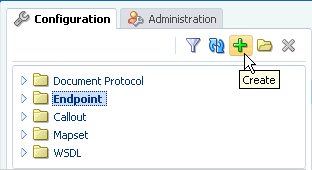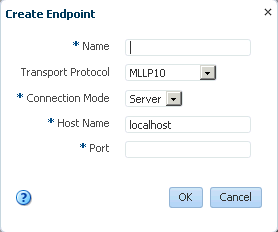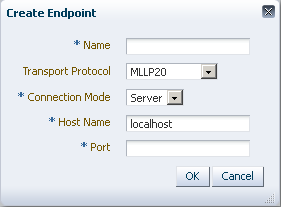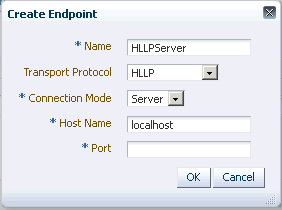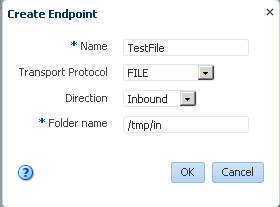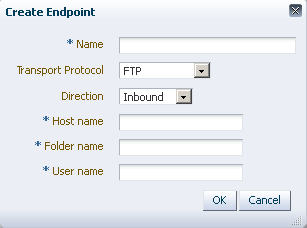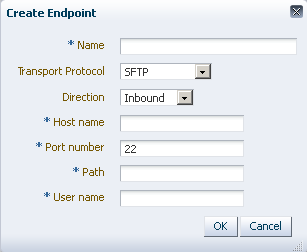B Creating Endpoints with Different Transport Protocols
The appendix covers how to create endpoints with different bidirectional and single-directional transport protocols.
The appendix contains the following topics:
B.1 Creating Bidirectional Endpoints
The supported bidirectional protocols are MLLP 1.0, MLLP 2.0, Generic TCP, and HLLP.
B.1.1 Creating an MLLP 1.0 Endpoint
This section covers how to create a bidirectional endpoint with the MLLP 1.0 transport protocol.
To create an endpoint with the MLLP 1.0 transport protocol:
B.1.2 Creating an MLLP 2.0 Endpoint
This section covers how to create a bidirectional endpoint with the MLLP 2.0 transport protocol.
To create an endpoint with the MLLP 2.0 transport protocol:
B.1.3 Creating a Generic TCP Endpoint
This section covers how to create a bidirectional endpoint with the Generic TCP transport protocol.
To create an endpoint with the Generic TCP transport protocol:
B.1.4 Creating an HLLP Endpoint
HLLP exchange protocol is a variation of the lower layer protocol. It is advanced form of MLLP Exchange Plug-in. It allows error detection and validation of HL7 messages. This protocol is based on TCP transport protocol. This section covers how to create a bidirectional endpoint with the HLLP protocol.
To create an endpoint with the HLLP protocol:
B.2 Creating Single-Directional Endpoints
The supported single-directional protocols are File, FTP, JMS, and SFTP.
B.2.1 Creating a File Endpoint
This section covers how to create a single-directional endpoint with the File transport protocol.
The File transport enables files to be picked up from a shared file directory.
To create an endpoint with the FILE protocol:
B.2.2 Creating an FTP Endpoint
This section covers how to create a single-directional endpoint with the FTP transport protocol.
FTP enables files to be passed with FTP between applications. FTP runs on default port 21.
To create an endpoint with the FTP protocol:
B.2.3 Creating an JMS Endpoint
This section covers how to create a single-directional endpoint with the JMS transport protocol.
JMS enables applications to send and receive messages to and from the queues and topics administered by any Java Message Service (JMS) provider, including Oracle WebLogic JMS and non-Oracle providers such as MQSeries JMS (IBM). If a user name and password are not provided, the local JNDI is used, including in a clustered environment, provided that the destinations are distributed.
To create an endpoint with the JMS protocol:
This creates the endpoint, and the endpoint is displayed in the right panel of the Oracle SOA Suite for healthcare integration user interface.
Figure B-9 Specifying JMS Endpoint Parameters
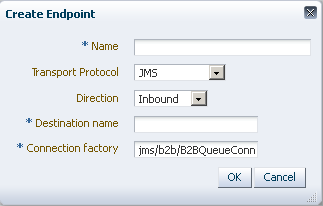
Description of "Figure B-9 Specifying JMS Endpoint Parameters"
B.2.3.1 Retrieving Document Information from JMS Headers
Oracle Healthcare supports retrieving of document information such as DOC_TYPE and DOC_REVISION from JMS headers in the following order:
-
If these values are found in JMS headers, then Oracle Healthcare uses these values to identify a document.
-
If these values are not found in JMS headers, then Oracle Healthcare uses the payload to identify these values.
Note:
The default MSG_TYPE in the case of JMS endpoints are considered as Request. In addition, you can identify the 997 or Acknowledgement messages from DOC_TYPE. So, if you want to pass messages with type other than 997, Acknowledgement, or Request, you must explicitly pass MSG_TYPE as part of JMS headers.
